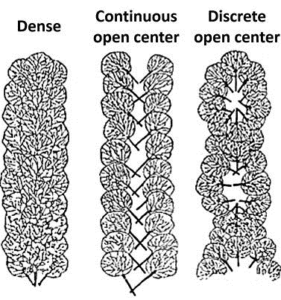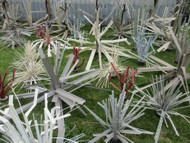Reservoir habitat artificial reef design criteria
Posted by RFHP on 12th Mar 2018
The morphology and complexity of habitat can be one of the more important factors influencing the effectiveness of structure as fish habitat. Relationships between habitat and species associations may best be summarized by the habitat diversity hypothesis, which states that species diversity increases with increasing availability of habitat types (Kovalenko et al. 2012). Fish abundance, richness, and diversity along shorelines of reservoirs are generally directly related to the structural complexity of available habitats (Barwick 2004; Newbrey et al. 2005). Higher species diversity can result in more complex food webs and longer trophic loops. Increased complexity of food webs creates a more stable fish assemblage that is less susceptible to chaotic dynamics and is made up of resilient interspecific interactions.
Interstitial space affects the size of fish attracted. Prey fish prefer small- or medium-size interstices when in the presence of predators (Crook and Robertson 1999). Early life stages of bluegill occupied small interstices within habitat, as close to body size as possible (Johnson et al. 1988), reducing danger from predation. However, even at younger life stages, largemouth bass were more likely to choose medium interstices rather than small ones. Potentially, this choice provides a balance between avoiding predation and having sufficient opportunity to ambush prey. Thus, diversity of interstitial space may best promote diverse fish assemblages within artificial reefs.
Besides complexity, the effect of structure on populations may depend on size of the reef. Rountree (1989) reported that fish abundance and diversity were related positively to structure volume and surface area. Bohnsack et al. (1994) reported that large reefs may have higher biomass densities than do small reefs but are oftentimes composed of fewer but larger individuals. Daugherty et al. (2014) reported that largemouth bass exhibited greater percentage occupancy in large structures but higher densities in small structures. Thus, depending on size, some artificial reefs may support fewer and larger fish, whereas others may support more and smaller individuals.




